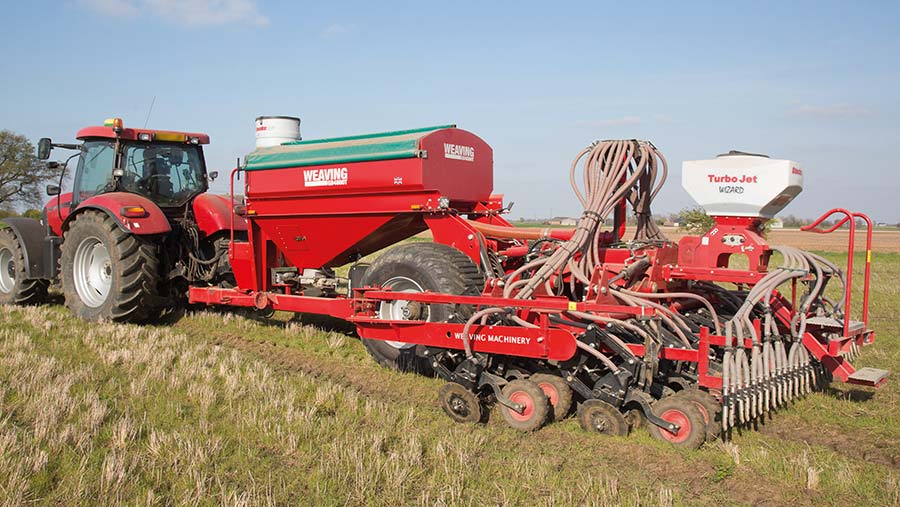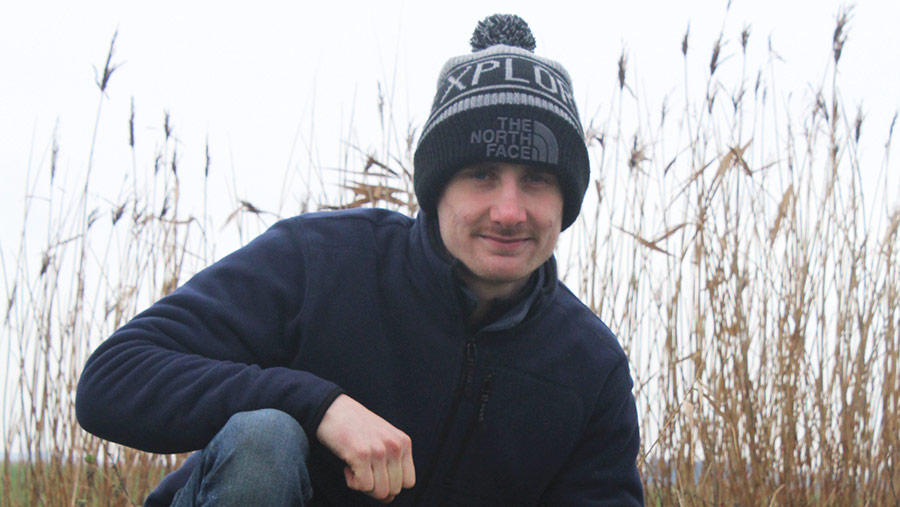How new carbon offset scheme for regenerative ag works
 © Tim Scrivener
© Tim Scrivener The first UK-certified soil carbon offsetting scheme is available to farmers who use regenerative agriculture practices, offering them a commercial opportunity worth up to £100/ha from sequestering carbon in their soils.
Called Gentle Farming, the fledgling system allows participating farmers to track carbon sequestration throughout the year, look at ways to change the eventual outcome and take steps to improve it.
Once harvest is over, soil carbon storage measurements are independently verified, with certificates issued, allowing farmers to sell these certificates and get financially supported and rewarded for their environmental practices.
See also: How a Cornish grower keeps wheat diseases at bay
It has been developed by Thomas Gent of Gentle Farming in partnership with Commodicarbon, a Denmark-based platform, which has a carbon certification programme that quantifies the soil carbon sequestration associated with reduced tillage and its changing crop management.
Income boost
With the potential to boost farm incomes by an estimated £90-£150/ha, the system works for each crop year and will continue to evolve as new methods and technologies become available, explains Mr Gent.
“Every farm is different and there are a number of factors to take into account, but an average figure for a no-till farm is 2-3t carbon dioxide equivalents per hectare,” he says.
Gentle Farming: The finer detail
The software is currently at a 50% discount and costs £43/month (or £39/month if the year is paid in full). A probable 20% commission on the carbon sales is taken.
This means the farmer gets about 80% of the carbon sales, although there is also an option for the grower to sell their own certificates – in much the same way as the grain trading market works.
Each certificate represents 1t of carbon dioxide equivalents and membership can be unsubscribed at any time with one month’s notice.
All participants must commit to no heavy cultivation of their land below 10cm for five to 10 years.
“That can vary enormously and some fields store as much as 8t/ha in a year, while others are lower.”
Knowing what a tonne of sequestered soil carbon is worth isn’t straightforward, he acknowledges. “This is an emerging market and, as such, we are learning all the time.
“The more farmers we have using the system, the greater interest we will get from potential buyers and the higher value these UK carbon offsets will have.”
Carbon value
The best indication of value is that the current EU Emissions Trading Scheme (ETS) price is trading more than €40/t (£34.41), Mr Gent adds.
“This is not carbon footprinting,” he stresses. “It measures carbon sequestration on a field-by-field basis and gives regenerative agriculture the recognition and validation it deserves.”

© Thomas Gent
The basic calculations for the system come from the Cool Farm Tool – an established model used by food companies worldwide – and the output gives a field’s carbon balance for the crop year, having taken emissions and carbon capture into account.
At present, it can be used for all arable crops, but not permanent pasture or root crops.
The offsets are certified to ISO-14064, meet United Nations’ guidelines and will be verified by a third party, he reports. They will also be block-chain secured and tracked.
Having worked to develop a scheme for the past year, Mr Gent is confident that carbon offset buyers are also interested in the individual regenerative agriculture farms involved and their ability to deliver biodiversity and ecosystem benefits.
Premium potential
“For that reason, these offsets are at the premium end of an emerging market,” he says.
“They come with added benefits such as better water quality and greater biodiversity, which are key to today’s buyers.
“It gives farmers an opportunity to promote their businesses and tell their individual stories. As we know, regenerative agriculture is more than just carbon.”
How does the system work?
- Register – Growers register their interest online and get a demonstration of the system.
- Subscribe/monitor – Growers sign up to the scheme and pay a monthly subscription, plus the agreed commission on any carbon offset sales. They must input information about the fields they have registered, which includes soil characteristics, tillage practices, rotational details, input use, fuel consumption etc. They can then plan the year’s operations and activities.
- Verify – Once verified, carbon offset certificates produced after harvest are sold, either by Gentle Farming or by the individual grower.
- Repeat – The process starts again with the new cropping year.
Mr Gent sees his role as co-ordinating UK farmers and their agronomists and helping to sell the offsets, promoting regenerative agriculture as a means of achieving the end-goal of soil carbon sequestration.
“Agronomists are central to the scheme and we are providing training free of charge so that they become certified carbon advisers. As well as giving advice, they will be used for the verification process.”
His vision is to develop a brand for regenerative agriculture and, in time, link the sale of additional farm produce.
“It’s early days but farmers are already signing up,” says Mr Gent.
“Their involvement is helping to refine the system, so that it remains a practical and easily understood method of earning additional income from regenerative farming practices.”

